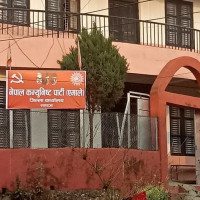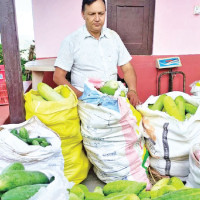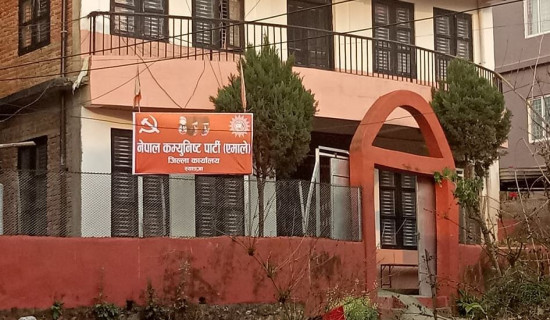- Monday, 1 December 2025
Consumers affected by short supply of clay oil lamps in Tihar
By A Staff Reporter,Kathmandu, Oct. 19: In Hindu culture, clay objects hold deep spiritual significance and are used in almost every religious ritual, from small household pujas to major ceremonies.
As the Tihar festival approaches, the demand for clay oil-fed lamps (diyos or paalas) has surged sharply across the country. Consumers, particularly in Kathmandu and Chitwan, said they were not able to get clay pots as per their demand.
Markets are now bustling with people buying and selling artistic, colourful, and traditional clay lamps of various shapes and sizes. According to Arjun Shrestha, a Janabahal-based businessman who has been in the pottery trade in Bhedasingh, this year has seen a greater shortage of oil-fed lamps compared to previous years.
“The demand increases significantly during Tihar as people illuminate their houses continuously for several nights,” Shrestha said.
He added that a dozen Nepali palas are currently being sold for Rs. 80, while Indian-made lamps cost between Rs. 50 and Rs. 100 per piece, depending on the size. “Last year, Nepali palas cost only Rs. 30 a dozen, but prices have risen this year due to the shortage,” he said, adding that prices may drop once fresh supplies arrive.
Shrestha said he had ordered 20 sacks of palas, but the quantity remains insufficient to meet the demand. Besides colourful lamps, clay idols of Goddess Laxmi and Lord Ganesh are also being imported from India, particularly for Tihar.
Meanwhile, Sima Neupane, the proprietor of Ceramica and Mato Bhada Udyog in Bharatpur, Chitwan, was sad when she was unable to produce clay lamps as per the target.
She said she was unable to supply clay lamps as she could not get enough clay to produce the goods.
"We are not allowed to extract black clay from Chitwan National Park area, and we have to bring it either from Kathmandu or Dang, but this year we could not bring it because of bad road condition after the recent rainfall," said Dr. Ankur Ghimire, Sima's husband.
Dr. Ghimire said there is a demand for 2 million clay lamps in Bharatpur alone during Tihar, and they are supplied from Bara and Rautahat. "Our factory could supply only 40,000 clay lamps this Tihar in lack of suitable soil," he said.
Hari Prajapati, a traditional potter of Bhaktapur, said that despite growing market demand, potters are struggling to meet it due to a shortage of suitable clay. “The places where we used to find good clay for pottery have now been covered by houses,” he said.
Bhaktapur’s Pottery Square remains a key hub for clay items. Members of the local Prajapati community have been moulding clay into various forms here for generations.
But according to Bhaktapur Municipality, only a few families now continue with this traditional occupation.
Finding appropriate clay has become increasingly difficult.
As Bhaktapur loses open land to urbanisation, potters are now
forced to bring soil from faraway
places such as Sankhu, Panauti, and Dhading.
Anil Parajuli from Hetauda said that traditionally made clay pots are environmentally friendly. “Although the use of electric lights during Tihar has increased, the cultural and religious importance of using oil-fed lamps keeps the demand for palas alive,” he said.














